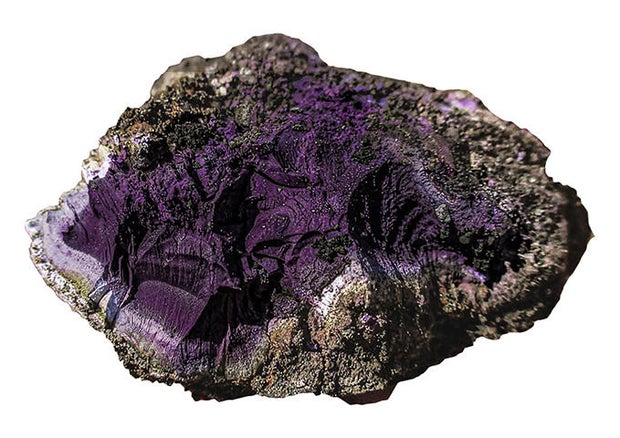The Discovery of Tyrian Purple in Roman Bathhouse Excavation
Archaeologists working in England found a “mysterious lump” of a purple substance that in Roman times would have been worth more than gold, researchers said in a news release.
The researchers who found the “soft purple substance” are working on a yearslong investigation of Roman remains in Carlisle, England, a cathedral city in the center of the country. The dig is being led by Wardell Armstrong, an environmental, engineering, and mining company based in the U.K.
The substance was found during a 2023 excavation of a Roman bathhouse. The remains of the third-century building exist on the grounds of what is now a cricket club, according to the news release.
The team worked with the British Geological Society to test the material. Experts from Newcastle University provided further analysis and determined that it is an organic pigment containing levels of bromine and beeswax, according to the release.
Wardell Armstrong
These ingredients allowed researchers to identify the substance as “Tyrian Purple,” the color that the Roman Empire associated with its imperial court. The pigment is made from thousands of crushed seashells from the Mediterranean, North Africa, and Morocco, according to the release, and was “phenomenally difficult” to make and expensive to produce, making it worth more than gold at the time.
The discovery of the material has led researchers to believe that the building under excavation was related to the court and may have even meant that the Roman emperor at the time, Septimius Severus, had visited Carlisle. Frank Giecco, the technical director of the organization leading the excavation project, said it is an “incredibly rare” find, especially in Europe.
“It’s the only example we know of in Northern Europe – possibly the only example of a solid sample of the pigment in the form of unused paint pigment anywhere in the Roman Empire,” Giecco said in the release. “Examples have been found of it in wall paintings (like in Pompeii) and some high-status painted coffins from the Roman province of Egypt.”
Additional Insight
The discovery of Tyrian Purple pigment in the Roman bathhouse excavation sheds light on the opulence and luxury associated with the Roman imperial court. The rarity and value of this pigment emphasize the high status of individuals who had access to such luxurious materials.
Historical Significance
Uncovering remnants of Tyrian Purple pigment in Europe provides researchers with a unique glimpse into the trade routes and cultural exchanges that existed during the Roman Empire. It highlights the sophisticated technologies and artistic techniques employed by ancient civilizations to create these prized materials.
Cultural Implications
The use of Tyrian Purple pigment in Roman artifacts signifies the importance of color symbolism in ancient societies. The association of purple with royalty and power offers insights into the social hierarchy and political structures of the time, where visual markers played a significant role in conveying status.
Technological Advancements
The scientific analysis of the organic pigment further showcases the advancements in archaeological techniques and material identification. By utilizing modern methods to analyze ancient artifacts, researchers can unravel the mysteries of the past and enhance our understanding of historical civilizations.














